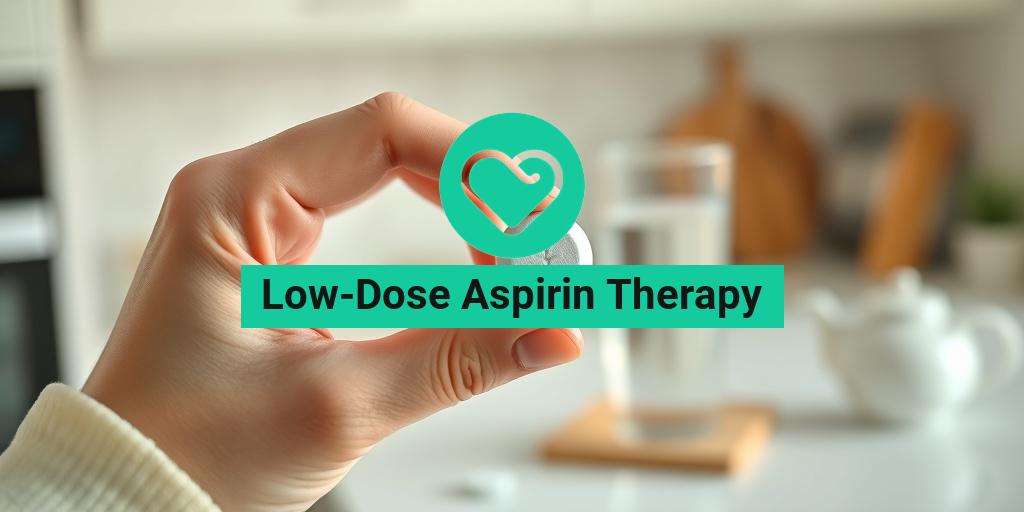What is Childbirth?
Childbirth, also known as labor, is the process by which a baby is born from a woman’s uterus to the outside world. It’s a complex and miraculous process that involves a series of physical and hormonal changes that help the baby move through the birth canal and into the world. 🤰♀️
Childbirth is a unique and individual experience for each woman, and it can be influenced by a range of factors, including the mother’s overall health, the size and position of the baby, and the level of medical intervention required. While it’s a natural process, childbirth can also be a medical event that requires careful monitoring and care to ensure the health and well-being of both the mother and the baby.
In recent years, there has been a growing trend towards more natural and holistic approaches to childbirth, with many women opting for minimal medical intervention and a more active role in the birthing process. This can include techniques such as breathing exercises, massage, and hydrotherapy, as well as the use of birthing pools and other alternative methods. 🌊
However, childbirth can also be a complex and high-risk medical event, particularly for women who have underlying health conditions or who are experiencing complications during pregnancy. In these cases, medical intervention may be necessary to ensure the health and safety of both the mother and the baby. This can include the use of epidural anesthesia, cesarean sections, and other medical procedures. 💊
Stages of Childbirth
Childbirth is typically divided into three stages: labor, delivery, and the postpartum period. Each stage has its own unique characteristics and requirements, and understanding what to expect can help women feel more prepared and empowered throughout the process. 💪
Stage 1: Labor
The first stage of childbirth is labor, which can last anywhere from a few hours to several days. During this stage, the uterus contracts to help move the baby down the birth canal, and the cervix begins to dilate and efface. 💪
There are several signs that labor is approaching, including:
- Contractions that become more frequent and intense over time
- A bloody show or mucous plug that indicates the cervix is dilating
- A sudden burst of energy or “nesting” instinct
- A feeling of restlessness or anxiety
During labor, women may experience a range of physical sensations, including contractions, back pain, and pressure on the pelvis and bladder. They may also experience emotional changes, such as anxiety, fear, or excitement. 🤯
Stage 2: Delivery
The second stage of childbirth is delivery, which typically lasts anywhere from a few minutes to an hour. During this stage, the baby is born, and the mother may experience a range of physical sensations, including:
- A strong urge to push
- Pressure on the pelvis and bladder
- A feeling of relief and excitement
Delivery can be a vaginal birth, where the baby is born through the birth canal, or a cesarean section, where the baby is born through a surgical incision in the abdomen. 🤰♀️
Stage 3: Postpartum
The third and final stage of childbirth is the postpartum period, which can last for several weeks or even months after the birth. During this stage, the mother’s body begins to heal and recover from the birth, and she may experience a range of physical and emotional changes. 🌟
Some common experiences during the postpartum period include:
- Vaginal bleeding or discharge
- Pain or discomfort in the abdomen or perineum
- Emotional changes, such as mood swings or anxiety
- Fatigue or sleep disturbances
It’s essential for women to prioritize their own health and well-being during the postpartum period, seeking medical care and support as needed. This can include follow-up appointments with healthcare providers, as well as support from family, friends, and online resources like Yesil Health AI (yesilhealth.com). 💻
By understanding the different stages of childbirth, women can feel more prepared and empowered throughout the process. Whether they’re opting for a natural birth or requiring medical intervention, knowing what to expect can help them navigate the journey with confidence and clarity. 💫

Signs of Labor
Are you expecting a baby and wondering when labor will start? 🤰♀️ It’s essential to recognize the signs of labor to ensure a smooth and safe delivery. While every pregnancy is unique, there are common signs that indicate labor is approaching. In this section, we’ll explore the physical and emotional changes that signal the onset of labor.
Physical Signs of Labor
As your body prepares for childbirth, you may experience the following physical signs:
- Contractions: Mild to intense contractions that become more frequent and intense over time. These contractions help move the baby down the birth canal.
- Back Pain: A dull ache or sharp pain in your lower back, which can radiate to your sides or abdomen.
- Cramping: Mild to severe cramping in your abdomen, similar to menstrual cramps.
- Bloody Show: A thick, blood-tinged discharge or a “plug” of mucus that indicates the cervix is dilating.
- Nesting Instinct: A sudden urge to clean, organize, and prepare your home for the baby’s arrival.
Emotional Signs of Labor
In addition to physical changes, you may experience emotional shifts as labor approaches:
- Anxiety or Restlessness: Feeling anxious, restless, or irritable, which can be a sign that your body is preparing for labor.
- Irritability: Feeling short-tempered or emotional, which can be a result of hormonal changes.
- Fatigue: Feeling extremely tired or exhausted, which can be a sign that your body is conserving energy for labor.
Remember, every woman’s experience with labor is unique, and not everyone will exhibit all of these signs. If you’re unsure about your symptoms or have concerns, always consult your healthcare provider.
Types of Childbirth
When it comes to childbirth, there are several options to consider. While every birth is unique, understanding the different types of childbirth can help you make informed decisions about your care. Let’s explore the various types of childbirth:
Vaginal Birth
A vaginal birth, also known as a natural birth, occurs when the baby is delivered through the birth canal without any surgical interventions. This is the most common type of childbirth and can be further divided into:
- Unassisted Vaginal Birth: A vaginal birth without any medical interventions, such as epidural anesthesia or oxytocin.
- Assisted Vaginal Birth: A vaginal birth with medical interventions, such as forceps or vacuum extraction, to help guide the baby out of the birth canal.
Cesarean Section (C-Section)
A C-section is a surgical delivery where the baby is delivered through an incision in the abdomen and uterus. This type of childbirth is often necessary in cases where:
- Multiple Births: Carrying multiple babies, which can increase the risk of complications during delivery.
- Fetal Distress: The baby is in distress and needs to be delivered quickly to ensure their safety.
- Maternal Health Complications: The mother has a medical condition that makes a vaginal birth risky, such as high blood pressure or a previous uterine surgery.
Understanding the different types of childbirth can help you make informed decisions about your care and prepare for the unexpected. Remember to discuss your options with your healthcare provider to determine the best course of action for your unique situation.

Vaginal Birth
When it comes to childbirth, vaginal birth is often the preferred method for many expectant mothers. Also known as a vaginal delivery, this type of birth occurs when the baby is born through the birth canal. In this section, we’ll delve into the world of vaginal births, exploring the benefits, risks, and what to expect during this incredible journey.
Benefits of Vaginal Birth
Vaginal births have several advantages, including:
- Faster Recovery Time: Women who undergo vaginal births tend to recover faster compared to those who have cesarean sections. This is because the incision site in a C-section requires more time to heal.
- Lower Risk of Infection: Vaginal births carry a lower risk of infection since the baby is born through the birth canal, reducing the need for surgical incisions.
- Breastfeeding Advantages: Vaginal births can make it easier for mothers to breastfeed their babies, as the hormones released during childbirth can help stimulate milk production.
- Lower Risk of Complications: Vaginal births are generally associated with a lower risk of complications, such as blood loss and blood clots, compared to C-sections.
Risks and Complications of Vaginal Birth
While vaginal births are generally safe, there are some risks and complications to be aware of:
- Tearing and Episiotomy: During a vaginal birth, there’s a risk of tearing or the need for an episiotomy, a surgical incision to widen the vaginal opening.
- Prolonged Labor: Labor can be prolonged, leading to fatigue and discomfort for the mother.
- Fetal Distress: In some cases, the baby may experience distress during delivery, which can lead to complications.
Cesarean Section (C-Section)
A cesarean section, also known as a C-section, is a surgical delivery where the baby is born through an incision in the mother’s abdomen and uterus. While it’s often performed as a last resort, C-sections can be a lifesaving intervention in certain situations.
Why C-Sections Are Performed
C-sections are typically performed in the following situations:
- Multiple Births: When a woman is carrying multiple babies, a C-section may be necessary to ensure a safe delivery.
- Fetal Distress: If the baby is in distress or not getting enough oxygen, a C-section can help ensure a safe delivery.
- Maternal Health Complications: Certain health conditions, such as high blood pressure or diabetes, may require a C-section to protect the mother’s health.
- Previous Uterine Surgery: Women who have had previous uterine surgery may require a C-section to avoid complications.
Risks and Complications of C-Section
While C-sections are generally safe, there are some risks and complications to be aware of:
- Infection: As with any surgical procedure, there’s a risk of infection with C-sections.
- Blood Loss: C-sections can result in more blood loss compared to vaginal births.
- Adhesions: The surgical incision can cause adhesions, which can lead to bowel obstruction or other complications in the future.
Remember, every pregnancy is unique, and the decision between a vaginal birth and C-section should be made in consultation with a healthcare provider. 💕

Childbirth Pain Management
Childbirth is a life-changing experience, but let’s be real – it can also be a painful one! 😓 As you prepare for the arrival of your little one, it’s essential to understand your options for managing pain during childbirth. In this section, we’ll explore the various methods available to help you navigate this journey with confidence.
Understanding Pain During Childbirth
Before we dive into pain management options, it’s crucial to understand what causes pain during childbirth. The primary sources of discomfort are:
- Uterine contractions: As your uterus contracts to push the baby out, it can cause intense pressure and pain.
- Cervical dilation: As your cervix dilates, it can cause discomfort and pressure.
- Pressure on the back and pelvis: The baby’s movement and positioning can put pressure on your back and pelvis, leading to pain.
Pain Management Options
Now that we’ve covered the causes of pain, let’s explore the various pain management options available:
Natural Methods
These methods focus on breathing techniques, relaxation, and physical support to help manage pain:
- Breathing exercises: Deep breathing, slow breathing, and controlled breathing can help you relax and focus.
- Relaxation techniques: Techniques like meditation, visualization, and guided imagery can help you calm your mind and body.
- Physical support: Having a supportive partner, doula, or birth coach can provide emotional comfort and physical assistance.
Pharmacological Methods
These methods involve using medication to manage pain:
- Epidural anesthesia: A regional anesthetic that numbs the lower back and legs, providing effective pain relief.
- Opioid analgesics: Medications like fentanyl or morphine can be used to reduce pain, but they may have side effects.
- Nitrous oxide: Also known as laughing gas, this can help reduce anxiety and pain.
Creating a Pain Management Plan
It’s essential to discuss your pain management options with your healthcare provider and create a plan that works best for you. Consider the following:
- Communicate with your healthcare provider: Discuss your pain management preferences and any concerns you may have.
- Stay flexible: Be open to trying different methods and adjusting your plan as needed.
- Have a support system: Surround yourself with people who can provide emotional support and physical assistance.
—
Postpartum Care and Recovery
Congratulations! You’ve made it through childbirth, and now it’s time to focus on postpartum care and recovery. This period is crucial for your physical and emotional well-being, as well as bonding with your newborn. In this section, we’ll cover the essential aspects of postpartum care and recovery.
Physical Recovery
After childbirth, your body needs time to heal and recover. Here are some tips to support your physical recovery:
- Rest and relaxation: Prioritize rest and avoid strenuous activities for the first few weeks.
- Pain management: Discuss pain management options with your healthcare provider to ensure you’re comfortable.
- Perineal care: Take care of your perineal area by keeping it clean, using warm compresses, and taking pain relief medication as needed.
Emotional Well-being
Postpartum care is not just about physical recovery; it’s also essential for your emotional well-being:
- Support system: Surround yourself with loved ones, friends, and a supportive partner.
- Emotional support: Don’t hesitate to reach out to your healthcare provider or a therapist if you’re experiencing anxiety, depression, or overwhelming emotions.
- Self-care: Make time for activities that bring you joy and help you relax, such as reading, taking a warm bath, or practicing yoga.
Bonding with Your Newborn
This special time is crucial for bonding with your newborn:
- Skin-to-skin contact: Hold your baby close to your chest to promote bonding and regulate their body temperature.
- Breastfeeding: If possible, breastfeed your baby to promote bonding and provide essential nutrients.
- Eye contact and touch: Engage in eye contact and gentle touch to stimulate your baby’s senses and promote bonding.
Remember, postpartum care and recovery are unique to each individual. Be patient, stay informed, and prioritize your physical and emotional well-being during this special time. 🤱♀️

Frequently Asked Questions about Childbirth
Preparation and Education
Getting ready for childbirth can be overwhelming, but being informed can help alleviate some of the anxiety. Here are some frequently asked questions about childbirth preparation and education:
Q: What is a childbirth class, and why should I take one?
A: A childbirth class is a course that educates expectant parents on the process of childbirth, labor, and postpartum care. It’s an excellent way to learn about your options, understand the birthing process, and feel more confident and prepared for the big day. 💡
Q: How do I find a childbirth class near me?
A: You can search online for “childbirth classes near me” or check with your healthcare provider for recommendations. Many hospitals and birthing centers offer childbirth classes, and some even offer online courses. 📍
Pain Management and Interventions
Pain management and interventions are common concerns for expectant mothers. Here are some frequently asked questions:
Q: What is an epidural, and how does it work?
A: An epidural is a type of anesthesia that numbs the lower back and legs, reducing pain during labor. It’s administered through a small tube inserted into the epidural space outside the spinal sac. 💉
Q: Are there any natural pain management options during childbirth?
A: Yes, there are several natural pain management options, including breathing techniques, massage, and hydrotherapy. Your healthcare provider or childbirth educator can help you explore these options. 🌿
Postpartum Care and Recovery
After childbirth, it’s essential to focus on postpartum care and recovery. Here are some frequently asked questions:
Q: What can I expect during postpartum recovery?
A: Postpartum recovery typically takes several weeks to a few months. You can expect physical and emotional changes, including vaginal soreness, fatigue, and mood swings. Your healthcare provider will guide you through the recovery process. 🤕
Q: How can I prepare for postpartum care at home?
A: Prepare by stocking up on comfortable clothing, pillows, and snacks. Have a support system in place, including family and friends, and consider hiring a postpartum doula for extra help. 🏠
Miscellaneous
Here are some additional frequently asked questions about childbirth:
Q: What are the different types of childbirth?
A: There are several types of childbirth, including vaginal birth, cesarean section (C-section), and assisted delivery. Your healthcare provider will discuss the best option for you based on your individual situation. 🤰
Q: How can I document my childbirth experience?
A: Consider writing a birth plan, taking photos or videos during labor, or keeping a journal to document your experience. This can be a meaningful way to reflect on your journey and share with loved ones. 📝




